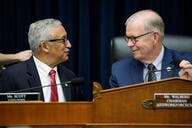You have /5 articles left.
Sign up for a free account or log in.
The Public Agenda report “Can I get a little advice here” sounds a clarion call regarding success in K-12 schools and higher education. We agree with the report’s suggestion that students from all socioeconomic and ethnic backgrounds must complete some form of postsecondary education in order to gain skills necessary to compete in today’s economy, and that school counselors play a crucial role in preparing students to succeed in the postsecondary arena. However, we believe that the report is in many aspects out of date with current trends in the counseling field.
As the old commercial for a particular carmaker assured viewers that this is “not your father’s” car, the profession of school counseling is in the midst of a significant shift in focus and training. School counseling professionals in the last decade have been tasked with answering the question, “How are students better off as a result of the work we do?” To do so, we are using data to examine and illustrate our impact on essential student outcomes, including student achievement and rates of success in postsecondary education. While we acknowledge our role historically and currently in creating and sustaining an unacceptably inequitable and less than optimally efficient system, school counselors have moved to the forefront in advocating for systemic changes to address the concerns cited by the Public Agenda report.
Recent research on school counseling program efficacy shows that students from schools that employ a comprehensive, developmental school counseling program have higher academic achievement and better school attendance than their peers who attend schools without such programs.
Comprehensive, developmental school counseling programs involve assisting students in building the skills necessary to achieve academic, career and personal/social success. Students whose counselors operate under such a model report a better overall school climate, more help preparing for their futures, more college and career information readily available for use, and better grades than students from schools with outdated counseling programs.
This new vision for school counseling is a relatively recent phenomenon. The American School Counselor Association National Model was published in 2003. Public Agenda’s research participants, however, were individuals between the ages of 22 and 30, who graduated from high school between 4 and 12 years ago. These young adults likely did not benefit from working with counselors trained under this comprehensive model with its focus on student success. The report’s suggestion that these participants’ responses are reflective of today’s school counseling programs, therefore, is not entirely accurate.
In addition, although the Public Agenda report states that the national school counselor to student ratio is 265:1, research from the American School Counselor Association (ASCA) indicates that the ratio is closer to 460:1, with some counselors holding a caseload of over 1000 students. The Public Agenda report also illuminates the reality of the tasks often delegated to school counselors, such as test administration, cafeteria duty and developing the school’s master schedule. These duties often leave school counselors with inadequate time to use their unique training to serve students and contribute fully to successful educational outcomes.
School counselors are currently trained to foster student academic achievement and enhance family and community collaboration in education. School counselors use school-specific data to identify and target achievement gaps between low-income and minority students and their more advantaged peers, and then utilize research-based strategies to eliminate these gaps. By addressing the underlying personal, institutional and systemic factors impeding student success, school counselors can contribute in invaluable ways as essential members of the educational team.
While we are grateful that the Public Agenda report alerted readers to the dire situation facing our students, families and schools today, we fear that students and families who read the report may be inadvertently misled. We are concerned that students and families may be discouraged from seeking college and financial aid assistance from their counselors and could potentially miss out on pertinent opportunities. We are also concerned that students and families might view the report as rationale to utilize private counselors, who are available only to those who have the financial where-with-all to do so. Furthermore, in light of massive budget cuts in public education, we fear that the report will be used by some school districts as justification for eliminating counseling staff. Any of these scenarios are entirely unwarranted and serve to further the equity and access gap in higher education.
We appreciate the opportunity to set the record straight on the status quo and future hopes of school counseling. While concern is merited and improvement in the types and efficacy of services provided is needed, school counselors have begun concerted efforts to systematically address barriers impeding student access to postsecondary education. School counselors will continue to engage in efforts to rectify the concerns addressed in the Public Agenda report while striving to make demonstrable differences in educational equity and success for all students.




